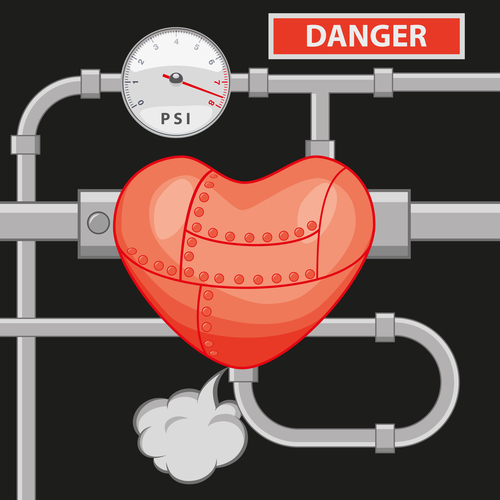A 2007 study in the Journal of Human Hypertension proved that a specific chiropractic adjustment of the C1 vertebra (aka Atlas) lowered blood pressure significantly.
In the 8-week double-blind, placebo-controlled study, 25 hypertensive patients received a specific upper cervical chiropractic adjustment via the NUCCA (National Upper Cervical Chiropractic Association) method and another 25 hypertensive patients received sham adjustments. The NUCCA method uses so little force that it can amount to barely the slightest increase in pressure, which allowed for the possibility of sham adjustments to even exist for the placebo group. Additionally, none of the 50 patients involved in the study were given antihypertensive medication to lower their blood pressure during the eight weeks.
After the eight week period ended, specific x-rays were taken of all 50 patients’ upper cervical spine, specifically their C1. The patients who received NUCCA adjustments showed proper alignment of their C1, while the patients who received sham adjustments did not.
The blood pressure results of the placebo group did not change, as expected. The patients who received the specific C1 adjustments saw an average decrease in their systolic pressure (the top number) of 17 mm Hg and an average drop in their diastolic pressure of 10 mm Hg at the end of the 8-week study. This amounts to the equivalent of two hypertensive medications being taken simultaneously, but with only positive side effects, like reduced back pain, reduced headaches, etc.
What is upper cervical chiropractic?
Upper cervical chiropractic is the specific analysis and adjustment of the C1 and/or C2 vertebrae. What makes this form of chiropractic different is that the adjustment of the C1 is very low force, and there is no cracking, popping, or twisting of the neck.
The C1 is the most freely moveable vertebra in the spine because it is the only vertebra in the spine that does not connect to the other ones by a disc. This allows for the majority of head rotation to occur at the level of C1-C2. The freedom of movement can also be negative, as the C1 can misalign very easily. This misalignment is called a vertebral subluxation. This 2007 study showed an association between a subluxation and hypertension, as well as a lowered blood supply, and therefore oxygen, to the brainstem. Because of C1’s ease of movement, only the slightest amount of force is necessary to restore its proper position at the top of the spine.
The most common upper cervical chiropractic techniques are knee chest, Blair upper cervical, NUCCA, Atlas Orthogonal, Orthospinology, Grostic, and my technique of choice known as Palmer Specific (also known in the chiropractic profession as the Hole-In-One technique, or simply HIO). There are other variations, but these techniques are the most common.
If you have high blood pressure, there is a possibility that a specific C1 adjustment can help you.
More from the Harshē Chiropractic Blog by Dr. Brandon Harshe













